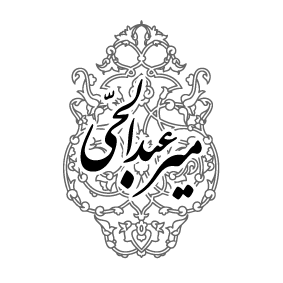Printed Glass: A Comprehensive Review of Features, Benefits, and Applications
Printed glass, an innovative product in the glass manufacturing industry, has gained a special place in interior decoration, architecture, and advertising due to its ability to print artistic, advertising, and custom designs. These glasses, using advanced technologies such as UV printing, digital, and ceramic, enable the creation of diverse designs with high clarity. As a glass manufacturer, we produce printed glasses with national and international standards using high-quality raw materials and state-of-the-art technologies. In this report, relying on credible Iranian sources such as khorasanglass.com, tehranshishe.com, and tetraglass.ir, we examine the production process, types, applications, benefits, disadvantages, and technical specifications of printed glass to provide localized, original, and accurate content.
Production Process
The production of printed glass is a complex process that requires advanced equipment and adherence to quality standards. The production stages include the following:
- Selecting Base Glass
- Design Preparation
- Printing on Glass
- Fixation and Drying
- Final Processing
- Quality Control
Float, tempered, or ultra clear glasses with thicknesses of 2 to 20 millimeters are selected as the base. These glasses must be free of any impurities to maintain transparency and quality.
Digital designs in PDF, AI, or JPG formats are prepared and optimized for printing using graphic software. The design quality must be at least 300 DPI.
Using flatbed or UV printing machines, resistant inks (CMYK or CMYK+W) are sprayed directly onto the glass. For complex designs, the transfer printing method (transferring the design from an intermediate layer with heat) is used.
Inks are dried with UV light, and for increased durability, a protective coating or lamination layer is applied.
If needed, the glass is tempered to increase its resistance to impact and heat by 4-5 times.
Tests for transparency (at least 85% in transparent glasses), moisture resistance, UV, and abrasion are performed to ensure product quality.
Technical Production Specifications:
Glass Thickness
2 to 20 millimeters.
Dimensions
Width up to 200 centimeters, height up to 300 centimeters (custom up to 300×600 centimeters).
Printing Ink
UV or water-based ink, resistant to heat up to 120 degrees Celsius and moisture.
Energy Consumption
In UV printing method, less than 10 watts per square meter for the printing process.
Equipment
Flatbed printing machine, UV printer, tempering furnace, industrial washing machines, and clean room.
Types of Printed Glass
- Direct UV Printing
- Transfer Printing
- Ceramic Printing
- Digital Printing
Direct printing of UV ink on glass with flatbed machine.
High clarity, suitable for custom designs, resistant to abrasion.
Transferring the design from paper or film to glass with heat.
Suitable for mass production, lower cost, good durability.
Printing with ceramic inks and baking in furnace.
High heat resistance (up to 700°C), suitable for exteriors and kitchens.
Using digital printers for high-resolution designs.
Flexibility in design changes, high precision, suitable for advertising.
Quality Standards
ISO 9001-2015
Quality management standard for production.
ASTM C1048
Standard for tempered printed glasses.
EN 12150
European standard for safety printed glasses.
Features and Benefits
Printed glass, due to its advanced technology, offers numerous features and benefits that make it an ideal choice for modern projects:
- Aesthetic and Design Versatility
- Resistance to Environmental Factors
- Safety and Durability
- Sound and Thermal Insulation
- UV Protection
- Integration with Decorative Systems
- Easy Maintenance
- Environmental Sustainability
Ability to print custom designs, logos, images, and colored patterns with high clarity and over 2000 RAL colors, featuring 3D and textured effects.
Resistant to moisture, heat (up to 120°C), UV rays (up to 99% protection), and abrasion, suitable for humid environments like kitchens and bathrooms.
Tempered printed glass does not shatter upon breaking, offering high safety with 4-5 times the strength of regular glass.
When double-glazed, reduces noise up to 40 decibels and heat transfer, saving up to 25% on heating and cooling costs.
Blocks 99% of ultraviolet rays, preventing fading of furniture and decorations.
Can be combined with LED lighting and insulation systems for enhanced visual effects.
Cleaning with a soft cloth and water, without the need for strong detergents or sharp tools.
Use of lead-free inks and recyclable glass makes this product environmentally friendly.
Ordering and Installation Process
- Ordering: Customers must specify color, thickness, dimensions, and required fittings. On-site measurement services are available.
- Production Time: Standard production takes 7 working days, with an expedited option (1 day) available.
- Installation: Must be performed by professionals to prevent damage. The process includes precise measurement, pre-tempering cutting, and installation with appropriate fittings.
- Pricing: Calculated based on thickness, color, and area (square meter × unit price). For example, in 2024, the price of standard tempered glass ranges from 700,000 to 1,500,000 IRR per square meter.
Applications
Printed glass, due to its flexibility and advanced features, is used in a wide range of projects:
Construction
Glass facades, skylights, decorative walls, glass partitions.
Residential
Inter-cabinet glasses, wall coverings, shower cabins, countertops.
Commercial
Storefront displays, advertising signs, restaurants, hotels to create a luxurious ambiance.
Healthcare
Hospitals and clinics for decorative walls and hygienic partitions.
Advertising
Advertising billboards, logo-branded promotional gifts, exhibition displays.
Industrial
Decorative glasses in household appliances, aquariums, and vehicles.
Key Tips for Choosing Printed Glass
- Printing Type: UV printing for precise and decorative designs, transfer printing for mass production is more suitable.
- Thickness and Dimensions: Thickness of 4-6 millimeters for interior decoration and 10-20 millimeters for facades is recommended.
- Material Quality: UV inks with high quality, transparency of 85%, and high resistance are recommended.
- Professional Installation: Ensure installation by specialists to maintain printing and glass quality.
- Expert Consultation: Contact our experts for selecting the best glass type and design.
